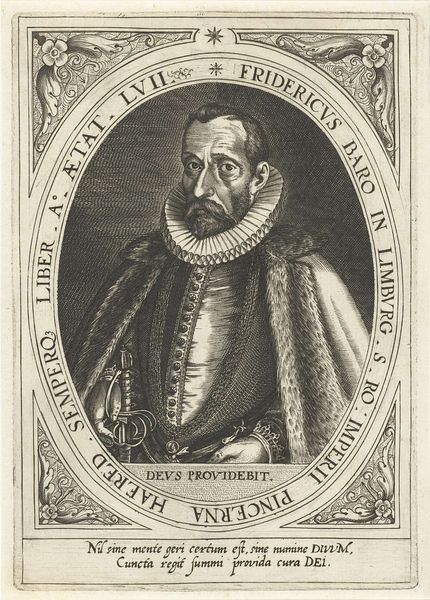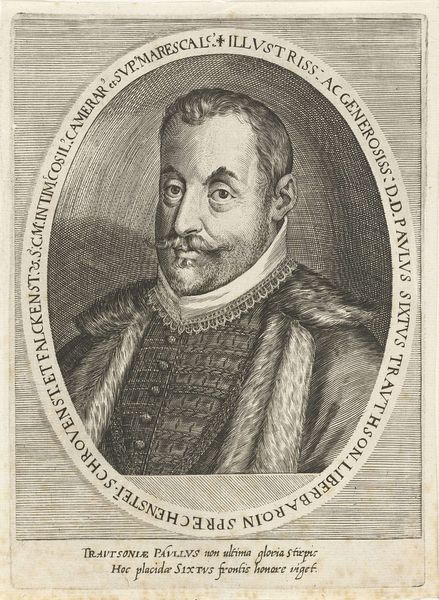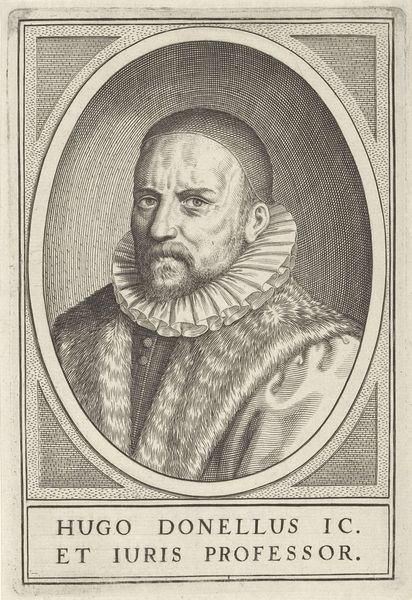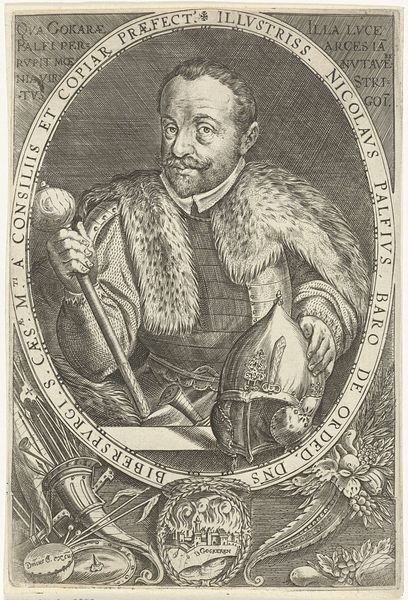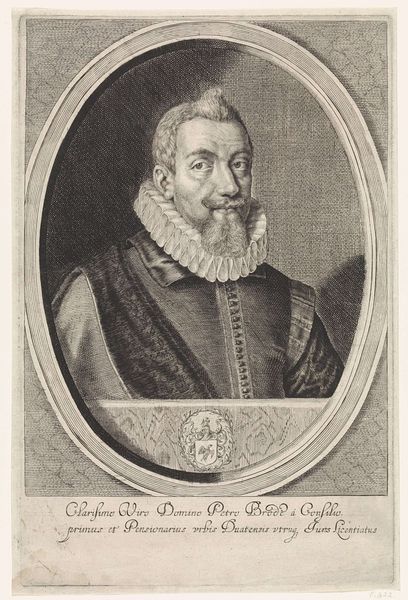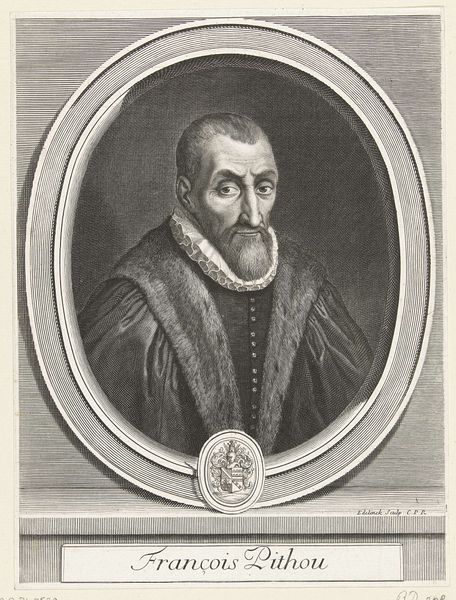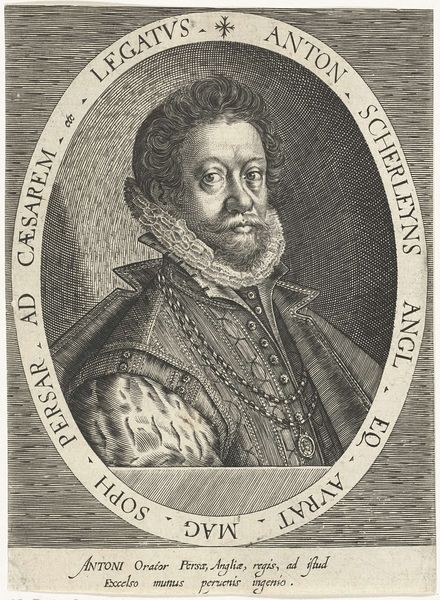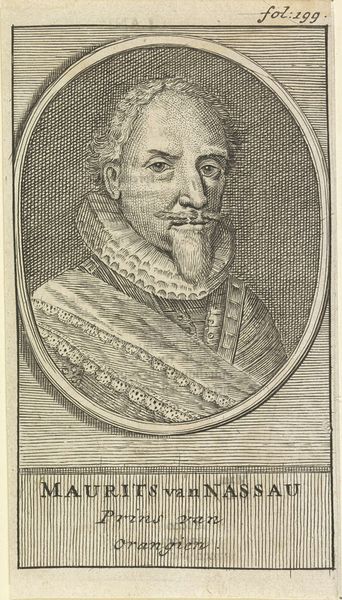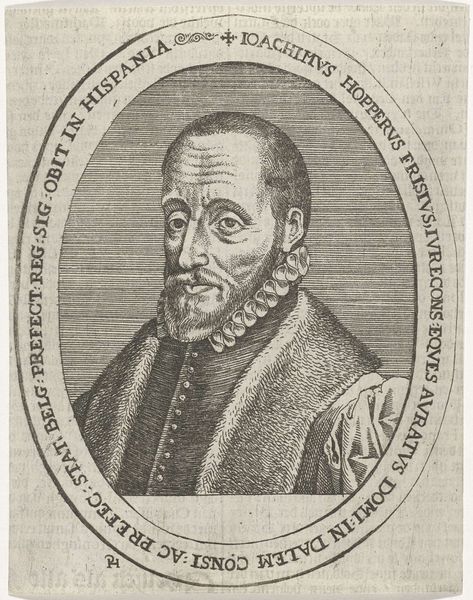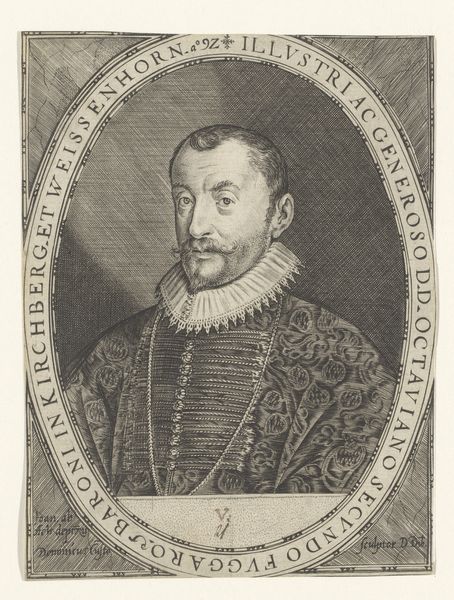
print, engraving
#
pencil drawn
# print
#
pencil sketch
#
old engraving style
#
mannerism
#
figuration
#
momento-mori
#
pencil drawing
#
chiaroscuro
#
line
#
history-painting
#
academic-art
#
engraving
#
realism
Dimensions: height 150 mm, width 105 mm
Copyright: Rijks Museum: Open Domain
This portrait of Doctor Georg Laub was made around 1600 by Dominicus Custos. It's an engraving, a printmaking technique where lines are cut into a metal plate, which is then inked and pressed onto paper. Look closely, and you’ll see the effect of this process. The image is built up from many tiny engraved lines, creating shadows and textures. It takes a lot of skill to control the depth and spacing of those lines, to achieve such a realistic effect. Engravings like this were essentially a reproductive technology. They allowed images to be circulated widely, like printed text. This print would have served to promote Doctor Laub's status and reputation in a world where medicine was still a very uncertain art. The skull and the Latin inscription remind us of our mortality. In this context, even a doctor is just another person working to hold back the inevitable.
Comments
No comments
Be the first to comment and join the conversation on the ultimate creative platform.
